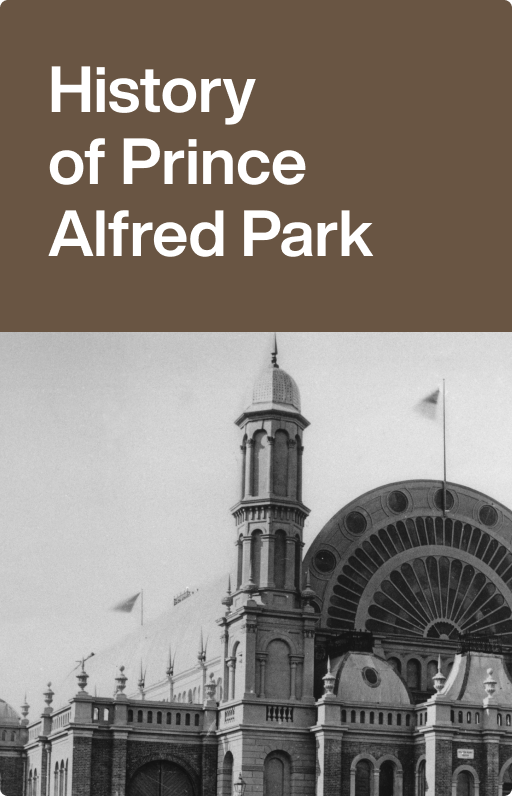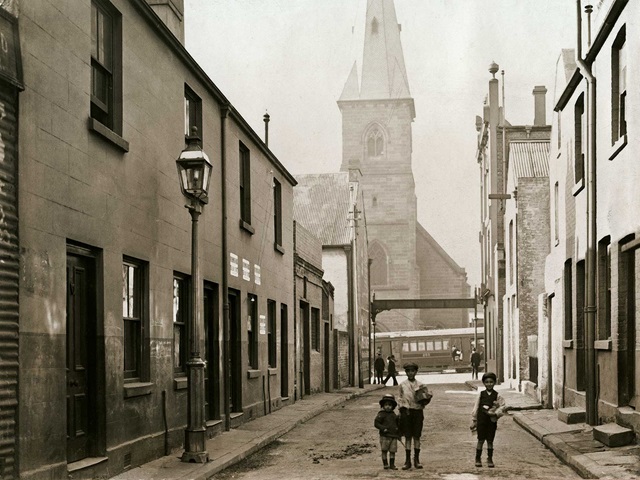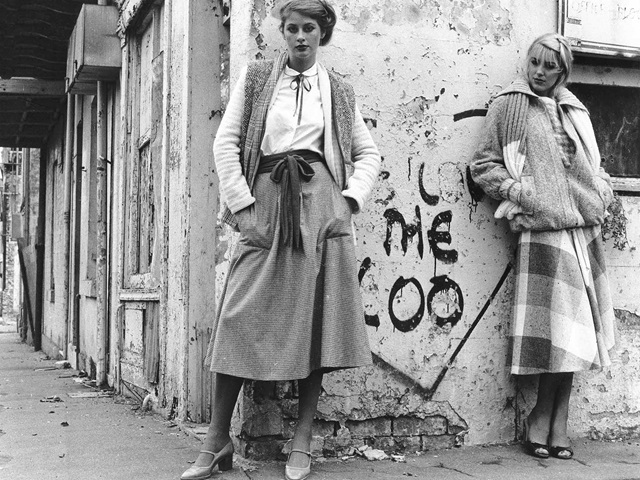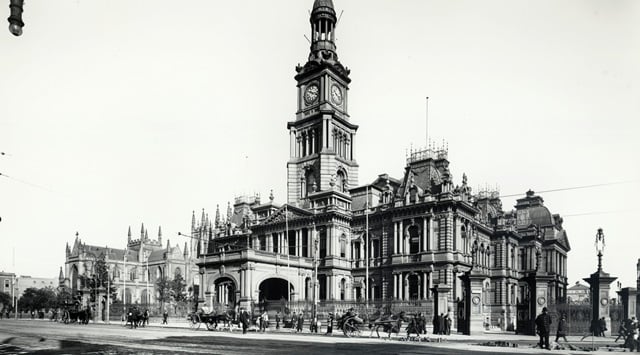History of Prince Alfred Park
Named after Queen Victoria’s second son when he visited Sydney in 1868. It’s the first park to be laid out in connection with a major Australian exhibition.

Prince Alfred Park is bounded by Chalmers and Cleveland streets, and Central railway station, Surry Hills.
The land on which Prince Alfred Park is located was originally traversed by a tributary of Blackwattle Creek, which drained into Sydney Harbour at Glebe. Following European invasion, this land became an undeveloped government paddock. This was later known as Cleveland Paddocks after Cleveland House, which was built nearby around 1824 and still stands on the corner of Bedford and Buckingham streets.
Sydney’s Aboriginal population was pushed to the fringes of the fledgling town. Cleveland Paddocks offered a place where Aboriginal peoples could continue to camp. In the first decades of the 19th century, Aboriginal people were pushed out of the area and the Cleveland Paddocks were reduced in size with the construction of Australia’s first railway line. During the 1850s land was also set aside for a school and St Paul’s Anglican church.
The remaining area, used as an uneven cricket ground from about 1850, was gazetted as a public reserve on 22 December 1865. Naming it ‘Prince Alfred Park’ coincided with the visit of Queen Victoria’s second son in January 1968. Prince Alfred was the first member of the British royal family to visit Australia. Together with its new name, the Sydney Municipal Council also approved the park’s first design, prepared by Alderman John Sutherland MLA, who was a builder and secretary for public works.

Draining and fencing the ground marked the beginning of the project, along with directing the open watercourse into a sewer. In May 1869, the Agricultural Society of NSW held its first Metropolitan Intercolonial Exhibition at Prince Alfred Park. The following year, which marked the centenary of Captain Cook’s landing at Botany Bay, the City of Sydney constructed the permanent Exhibition Building in the park’s northern part. It predated the first International Exhibition in the Garden Palace in The Domain Sydney (1879) and the World Heritage-listed Royal Exhibition Building in Melbourne (1880).
City engineer Edward Bell designed the building and prominent architect Benjamin Backhouse redesigned the park grounds. The new layout reflected international trends in exhibition garden design and represented a significant shift in civic aspirations for public open spaces as areas for amusement, recreation and leisure.
Based on Backhouse’s design, the ground near the building was terraced and the lower areas were infilled. As was typical for the time and promoted by Charles Moore (Director, Royal Botanic Garden 1848–96), Moreton Bay Figs were planted as an informal row along the park boundaries. Queensland Kauri pine, Port Jackson figs and Coogera also likely date from this early phase.
During the life of the building from 1870 to 1954, the park performed a major public function as a venue for important events and exhibitions. The Agricultural Society held its yearly exhibitions in the building until 1881, when it moved to Moore Park. The Building later became a concert hall, roller-skating rink and Anthony Hordern and Sons’ Palace Emporium. From 1925 to 1936, it housed the War Memorial Museum until it moved to the Australian War Memorial in Canberra. The Park was often used for concerts, circus performances and buckjumping competitions.
Further levelling of the park was carried out in 1902 when sand and earth were removed from the new railway station site to Prince Alfred Park. The park was essentially levelled with a gentle rise towards St Paul’s Church and new asphalt pathways were laid.
Tennis courts were built in 1924 and the adjacent Coronation Playground opened in 1940. The playground’s name commemorates the coronation of King George VI in 1937. Apart from 3 supervised playgrounds with slippery dips, swings and bars, there was also a mobile library. The former field house was later renamed the Coronation Centre and has served as a community centre and amenities block for the adjacent tennis courts.
Following World War 2, demand for outdoor public swimming pools in metropolitan Sydney increased as learning to swim became compulsory for NSW primary school children in 1944. In 1954, the Exhibition Building was demolished and replaced by a swimming pool, wading pool and ice rink. When it opened in 1958, Prince Alfred Park Pool was the second post-war pool in the area after Victoria Park Pool (1954).
The ice-skating rink opened behind the pool in the winter of 1959 and was the only one of its kind in Australia at the time. It was in use until 1985 and demolished in 1996–97. Prince Alfred Park Pool remined popular and in use until 2009 when it was closed for a major park upgrade. The redevelopment included 5 new Grand-Slam-grade tennis courts, a new basketball court and the multi-award-winning redesign of the pool, completed in 2013.
Rainbow path and Equality Green
A 90m rainbow path was added in 2019. It isn’t just a cheerful addition to the neighbourhood. It’s a bold representation of Australia’s journey towards equality for people of diverse sexualities and genders. The path also speaks to the ongoing struggle against discrimination.
The path cuts through the central lawn of Prince Alfred Park. It was named ‘Equality Green’ in 2018 by the City of Sydney, commemorating the campaign for marriage equality.
Thousands of Sydneysiders came to Prince Alfred Park to hear the results of the national same-sex marriage postal survey on the morning of 15 November 2017.
Volunteer group Australian Marriage Equality (AME) led the ‘Yes’ campaign and organised the event here. When the Australian statistician David Kalisch announced that 61.6% of Australians were in favour of marriage equality for LGBTIQ communities, the 30,000-strong crowd erupted in relief and jubilation.
The grassroots movement for marriage equality started in 2004. Built on years of activism for the rights of lesbian, gay, bisexual, intersex and queer peoples, it was a response to the amendment of the Marriage Act 1961 to exclude same-sex couples. The Act was formally updated on 9 December 2017 by federal parliament to allow for marriage equality. It now defines marriage as “the union of 2 people to the exclusion of all others, voluntarily entered into for life”.
Related places
Parks
Prince Alfred ParkNext to Central station, this 7.5 hectare park offers plenty of green space and recreational facilities including an outdoor pool, sports courts, playgrounds and fitness equipment.Surry HillsPlaygrounds
Prince Alfred Park PlaygroundThe award-winning Prince Alfred Park features 2 playgrounds, an enclosed toddlers playground and an open play space adjacent to basketball courts.Surry HillsPools
Prince Alfred Park PoolOur first fully accessible heated outdoor pool features a green roof of native grasses to regulate temperature and includes functional public art pieces.Surry Hills



